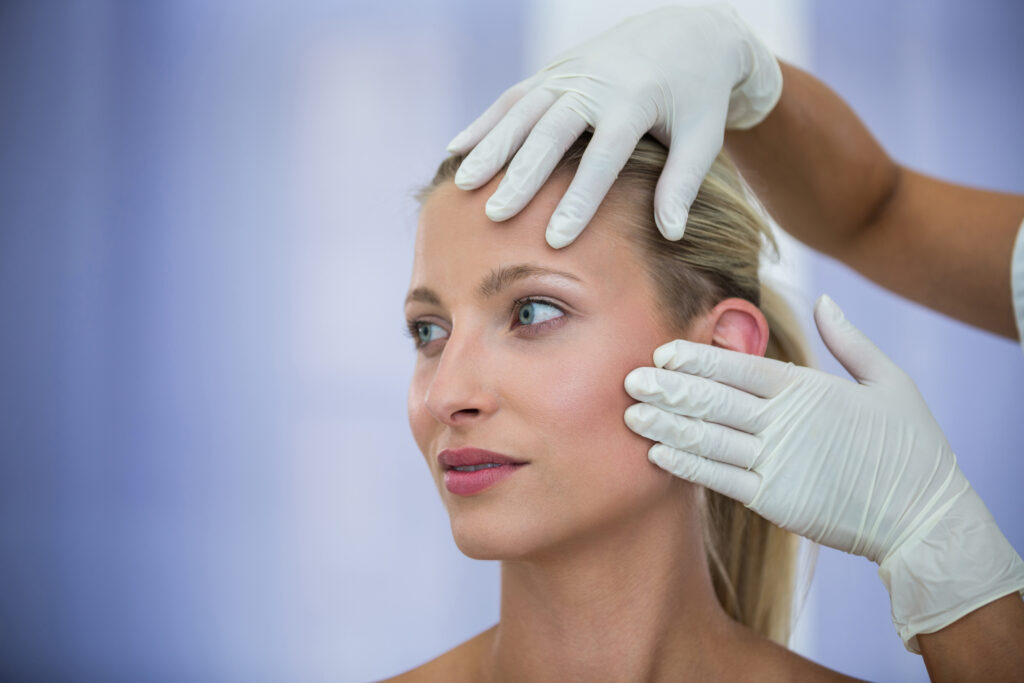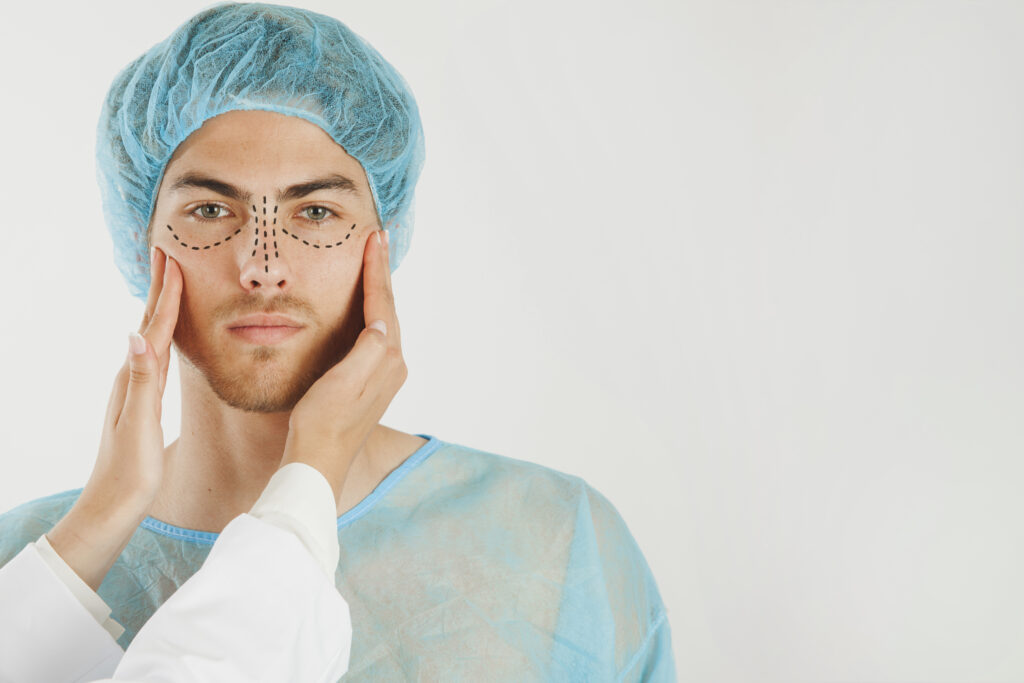Nose job Turkey is one of the most searched and booked cosmetic procedures by international patients.
In this guide you’ll learn everything about getting a rhinoplasty in Turkey: what it costs in 2025, how the process works, safety steps, recovery expectations, how to choose the right surgeon, and the critical questions patients always ask. If you’re coming from abroad and looking into nose surgery in Turkey, this article lays out the full path clearly so you can plan without surprises.
Contents
- 1 Why Choose a Nose Job in Turkey
- 2 Types of Rhinoplasty Turkey Offers
- 3 The Full Nose Job Turkey Process Step by Step
- 4 Recovery After a Nose Job in Turkey
- 5 Cost Breakdown and What’s Included in Rhinoplasty Turkey Packages
- 6 Safety, Risks, and How to Reduce Them
- 7 Choosing the Right Surgeon and Clinic in Turkey
- 8 FAQ (Rich Snippet Targeting)
- 8.1 Is Turkey good for rhinoplasty?
- 8.2 How much does a nose job in Turkey cost in 2025?
- 8.3 What is the difference between open and closed rhinoplasty?
- 8.4 How long is recovery after a nose job?
- 8.5 Is it safe to breathe through your nose after rhinoplasty?
- 8.6 What’s the minimum and maximum age for rhinoplasty in Turkey?
- 8.7 Can a bent nose be straightened?
- 8.8 How painful is a nose job?
- 8.9 How many follow-ups are typical?
- 9 Conclusion
Why Choose a Nose Job in Turkey
Many people choose a nose job in Turkey because it hits the sweet spot of surgical quality, cost clarity, and a support system built for international patients. Turkey, especially cities like Istanbul, has become a global center for rhinoplasty, drawing patients with competitive pricing and surgeons who perform high volumes of nose reshaping procedures. Medical tourism infrastructure, from virtual consults to airport pickup, is mature, which means a foreign patient can arrive, have surgery, recover, and return home with a minimized hassle.
Cost Advantage of Rhinoplasty Turkey
The financial gap is the headline reason many come. A nose aesthetic Turkey package in 2025 typically runs between about $2,000 and $7,000 depending on complexity, with most standard cosmetic rhinoplasties falling in the $2,500–$4,500 range when bundled (surgery, anesthesia, transfers, accommodation, and follow-up). That is often 60–75% less than comparable procedures in the UK, US, or much of Western Europe.
Quality of Care and Surgeon Expertise
Lower price doesn’t automatically mean lower skill. Many Turkish rhinoplasty surgeons, like Dr. Cem Altindag, specialize strictly in noses, running high-volume practices with advanced imaging, preservation techniques, and both open and closed approaches. Clinics increasingly publish detailed before/after galleries and invest in patient communication. Highly regarded surgeons (including those noted for revision work and ethnic preservation techniques) reinforce that the country is not just cheap, it has zones of excellence.
Medical Tourism Infrastructure
Turkey’s system for international patients is built around full packages. From your initial virtual assessment to the day of surgery and follow-up, clinics typically coordinate: airport transfers, interpreters, hotel stays, surgical care, and recovery support. That bundled convenience is part of why people feel more confident traveling for a nose shaping surgery Turkey.
How to Avoid Low-Quality Providers
Not every clinic is equal. Red flags include pressure to pay before a proper consultation, no visible proof of the surgeon’s personal case history, vague “package” descriptions without itemized breakdown, and lack of accessible patient feedback. Good practice is to verify surgeon credentials, ask for recent before/after examples of cases with anatomy similar to yours, and get the full written itinerary and refund/revision policy before sending money.
Types of Rhinoplasty Turkey Offers
Open Rhinoplasty vs Closed Rhinoplasty
The two main technical paths are open and closed approaches. Open rhinoplasty involves a small external incision on the columella, giving the surgeon direct visual access, especially useful for complex tip shaping or revision cases. Closed rhinoplasty hides all incisions inside the nostrils; it can mean faster early swelling reduction but limits visibility for intricate changes. The right method is chosen based on your anatomy and goals. Many Turkish clinics offer both and explain the trade-offs during consultation.
Septorhinoplasty and Functional Nose Surgery

If you have breathing issues (like a deviated septum) alongside cosmetic concerns, septorhinoplasty combines form and function in one surgery. It’s common for international patients to correct both in a single trip rather than doing them separately. This dual approach gives better long-term satisfaction because the nose not only looks balanced but also works well.
Nose Tip Reshaping and Nostril Alteration
Sometimes the change needed is focused: refining the tip, adjusting nostril width, or improving symmetry without altering the rest of the nose. Turkish surgeons use cartilage grafting, conservative reduction, and structural support techniques to shape the tip while keeping natural movement. These refinements are often part of both primary and revision cases.
Revision Nose Surgery Turkey
Revision rhinoplasty is surgery on a nose previously operated on, usually to fix functional problems or aesthetic issues from a prior result. Turkey has a growing reputation for handling complex revision cases, often at lower cost than Western countries, but they demand a surgeon with specific experience in revisions. Expectations must be managed: revisions can be more unpredictable, and prices reflect that complexity (some specialist revision packages can go up to €8,000+).
The Full Nose Job Turkey Process Step by Step
Initial Consultation and Virtual Evaluation
You begin with an online consultation. The clinic or surgeon reviews photos, discusses your goals, explains which techniques suit your anatomy, and gives you a clear quote. Good providers walk through risks, expected results, timeline, and the full travel/surgery schedule. They’ll also confirm that you’re a candidate and may ask for medical history or preliminary imaging.
Preoperative Preparation
Before the operation you’ll be instructed on medications to stop, fasting, smoking cessation if necessary, and any special hygiene routines. Some clinics send a pre-surgery packet with guidelines and a coordinator to answer questions to reduce last-minute confusion.
The Surgery Day
Rhinoplasty surgeries in Turkey typically take 1.5 to 3 hours depending on complexity. Whether open or closed, the surgeon reshapes bone and cartilage, may add grafts for structural support, and addresses any internal airflow problems at the same time. Anesthesia is commonly general, and experienced surgical teams handle monitoring.
Immediate Aftercare and Hospital Stay
After surgery you’re monitored briefly; most patients go back to their hotel the same day, though some clinics offer an overnight stay. External splints and internal supports help the new shape heal. Pain is usually mild to moderate; most clinics provide medications and clear instructions. First follow-up is often around day 5–7 for splint removal and evaluation.
Recovery After a Nose Job in Turkey
Week-by-Week Healing Timeline
- Days 1–7: Peak swelling and bruising. Splint usually removed around day 7. Breathing may feel restricted due to swelling.
- Weeks 2–4: Visible bruising subsides. Internal swelling drops, making breathing easier. Light activity returns gradually.
- Months 3–6: Most structural settling happens. The tip continues refining; subtle asymmetries smooth out.
- Up to 12 Months: Final shape is established. Some residual tip swelling can linger but becomes negligible over time.
Tips to Speed Up Recovery
Keep your head elevated while resting, avoid blowing your nose early, sneeze with an open mouth to reduce pressure, avoid heavy lifting or strain for at least two weeks, and protect the nose from sun exposure. Follow the exact aftercare protocols your surgeon gives, those small rules prevent setbacks.
Common Side Effects and When to Contact Your Surgeon

Mild swelling, temporary nasal blockage, light bleeding, and numbness are normal early on. Call your surgeon if you experience signs of infection (fever, increasing redness, foul discharge), severe pain not eased by medication, or any sudden changes in breathing. Prompt communication prevents complications.
Returning Home and Long-Term Follow-Up
Most international patients travel home after their first follow-up (usually week 1). Many clinics maintain remote check-ins at 6–8 weeks and even later to track healing. Keep a photo journal to compare progress and share it if your surgeon asks during remote consultations.
Cost Breakdown and What’s Included in Rhinoplasty Turkey Packages
Typical Price Ranges in 2025
In 2025 the cost structure for a nose job Turkey is roughly:
- Standard primary rhinoplasty: $2,500–$4,500 (all-inclusive packages often fall in this band).
- Complex or ethnic/niche refinement: slightly higher depending on technique.
- Revision rhinoplasty: can reach €7,000–€8,500 or more because of the extra difficulty.
What to Ask Before You Pay
Before committing, get answers in writing to:
- Who exactly will perform the surgery and what are their specific rhinoplasty credentials?
- Is anesthesia included?
- Are postoperative visits and complications covered?
- What’s the revision policy if results aren’t satisfactory?
- What travel logistics are bundled (transfers, hotel, translators)?
- Can I see recent before/after photos of similar cases?
Ask to see a full itemized breakdown so advertised “starting at” prices aren’t hiding add-ons.
Spotting Value vs Red Flags
Real value means transparency, proven results, and a process that protects you before, during, and after. Beware of aggressively low prices with no verifiable surgeon identity, clinics that rush communication, or those that push immediate deposits without a documented plan.
Safety, Risks, and How to Reduce Them
Common Risks of Nose Shaping Surgery Turkey
Risks include infection, breathing issues, asymmetry, prolonged swelling, and in rare cases, the need for further revision. Choosing a board-experienced rhinoplasty specialist and following pre/post-op instructions reduces these substantially.
Red Flags in Clinic Selection
Watch out for: no clear surgeon name attached to the procedure, lack of real patient reviews, no pre-surgery face-to-face or video consultation, pressure to pay without paperwork, or refusal to show you recent cases.
Questions to Ask Your Surgeon
- How many rhinoplasties do you perform annually?
- Can you show me before/after of similar noses?
- Which method will you use, and why is it best for me?
- What complications could arise in my specific case?
- What happens if I’m unhappy, what is the revision policy?
Insurance, Revisions, and Emergency Planning
Medical tourism means you’re often outside your home health coverage. Confirm who handles post-return issues, whether emergency contact is available, and if revisions are covered or discounted when needed. Plan for a local fallback (e.g., surgeon referral in your home country if needed) and keep all documentation accessible.
Choosing the Right Surgeon and Clinic in Turkey
Look for surgeons with consistent portfolios, verified patient feedback, and clear communication channels. Language support, detailed care pathways, and integrated travel logistics make the experience smoother. Also plan your travel: visa requirements, recovery-friendly accommodation, and arrival timing so you’re not rushed. Balance surgeon reputation with realistic expectations.
FAQ (Rich Snippet Targeting)
Is Turkey good for rhinoplasty?
How much does a nose job in Turkey cost in 2025?
What is the difference between open and closed rhinoplasty?
How long is recovery after a nose job?
Initial recovery is 1–2 weeks for splint removal and major swelling reduction; full final results settle over 6–12 months.
Is it safe to breathe through your nose after rhinoplasty?
Breathing may feel blocked early due to swelling or internal supports. Normal nasal airflow returns gradually over the first few weeks as swelling subsides.
What’s the minimum and maximum age for rhinoplasty in Turkey?
Can a bent nose be straightened?
How painful is a nose job?
Conclusion
A nose job Turkey can be a smart, effective choice if you do the homework. The combination of experienced rhinoplasty surgeons, transparent package options, and proven medical tourism support makes it viable for many abroad patients. The difference between a good outcome and a problem is in the selection: verify the surgeon, understand exactly what’s included, ask the right questions, and plan your trip with a recovery buffer. Start with a virtual consultation, compare at least two clinics, and get a written detailed plan before you go.


